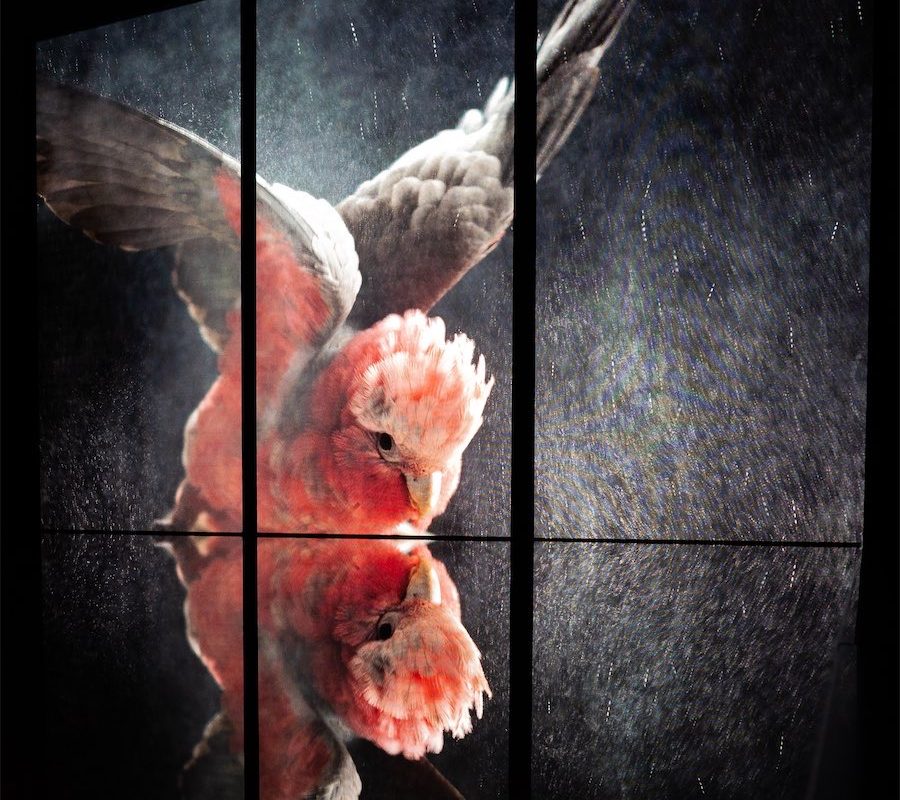
WHEN photographer Nick Moir found himself trying to get into Duffy during the 2003 Canberra bushfires and took what he thought was a shortcut through smoke, a fire swept up on him and in panic he drove off the road into a paddock.
“It was a really dumb decision,” he says in retrospect, “to put myself in danger unnecessarily. I don’t do that sort of stuff now. I should’ve moved around the back or got in earlier, but I was younger and more inexperienced.”
Even so, he received a World Press Photo award for his coverage of that fire season.
A searing exhibition of Moir’s fire photographs, “The Burning”, is about to go on show at Tuggeranong Arts Centre, whose visual arts program manager, Karena Keys, heard him talking at Campbelltown Arts Centre last year and snaffled him up for what now emerges as a “here and now” show.
This is the first time these photographs have been exhibited.
“All the images,” Moir tells me by phone from halfway between Forbes and West Wyalong where he’s chasing storms, “are literally two and a half months old – some from December and a couple from November, mostly taken around Sydney and the Taree region.”

The images, he says, will be accompanied by a description of the extremes he encountered, especially at a bushfire west of Campbelltown, where the bush exploded into raw energy.
A veteran snapper of nature’s extremes, his photo essay, “Last Day on Earth” documented the storms he chased during 2006 in America’s Tornado Alley. Then in 2009 he was named International Environmental Photographer of the Year in the Changing Climates category for his image of a bushfire bearing down on a town in south-east NSW, and he’s recently been commissioned by GEO to photograph storms in Australia’s tropical north.

The son of the political cartoonist Alan Moir, he was raised in journalism and art, he is now the lead news photographer for “The Sydney Morning Herald” and a founding member of the Oculi Photographic Collective.
A father of four, he lives in Newport but grew up in the Blue Mountains which, he says, is “how I got to know about firestorms and stuff like that”.
He doesn’t mind being called an adrenaline junkie but says, “It has to be pointed out that I put a lot of thought into what I do, certainly there is some storm-chasing but there is a whole other level to this. It has to be a steady, calm thing and a lot of preparation goes into what to do. You don’t just turn up and photograph, you have to prepare to capture the intensity of those moments.”

Moir was a first-time father when he went to Aceh to cover the tsunami in December 2004, when there was no information coming out from the region. Armed with some geological knowledge, he made his way into Aceh and found devastation.
“The tsunami was a major event… it was a very difficult assignment in pure scale, with literally tens of thousands of corpses rotting. As a father I can’t look at the ocean without thinking of what happened – it leaves a scar.”
“The Burning” will be the centrepiece in a suite of exhibitions opening Tuggeranong Arts Centre’s 2020 season, which has adopted “Solastalgia” as its creative theme for this year, a term coined by Australian environmental philosopher Glenn Albrecht to describe the sense of loss or nostalgia we feel when homes or environments change irreconcilably in the face of climate change or natural disaster.
The companion shows will be “Fake Nature”, where painters Waratah Lahy and Tony Curran have each taken a technological gaze highlighting photographic, algorithmic and Web 2.0 responses to nature, while in “Umma’s Tongue-Molten: at 6000°,” Hannah Bronte pairs the female black body with panoramic images of mining and natural destruction.
2020 season launch, Tuggeranong Arts Centre, 2pm, Saturday, February 8. Free, no bookings required. “The Burning” runs until March 14.
Who can be trusted?
In a world of spin and confusion, there’s never been a more important time to support independent journalism in Canberra.
If you trust our work online and want to enforce the power of independent voices, I invite you to make a small contribution.
Every dollar of support is invested back into our journalism to help keep citynews.com.au strong and free.
Thank you,
Ian Meikle, editor




Leave a Reply